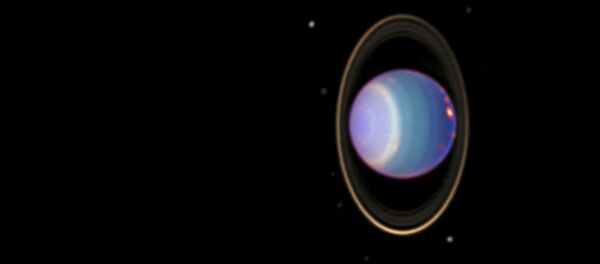The planet Uranus has always been seen as just a featureless ball of blue and green gas, but it appears there is more to the planet then meets the eye.
Pictures released by NASA show how bright auroras light up the planet's atmosphere.
#unjouruneimage — Aurores polaires intenses sur Uranus @Hubble_space Picture of the week @ESA @NASA #ObsParis350ans https://t.co/na97XNMpUj pic.twitter.com/ni10CFjtIg
— ObservatoiredeParis (@Obs_Paris) April 5, 2017
Uranus' auroras are driven by the same basic processes that cause auroras planet Earth, which are also known as the northern and southern lights.
A spokesperson for NASA has said that auroras is caused by streams of charged particles from various solar winds.
"The planetary ionosphere, and moon volcanism. They become caught in powerful magnetic fields and are channeled into the upper atmosphere, where their interactions with gas particles, such as oxygen or nitrogen, set off spectacular bursts of light," a spokesperson for NASA wrote in an online statement.
In 2011, NASA and the European Space Agency (ESA) Hubble Space Telescope became the first Earth-based telescope to snap an image of the auroras on Uranus.
In 2012 and 2014, a team led by an astronomer from Paris Observatory took a second look at the auroras, using the ultraviolet capabilities of the Space Telescope Imaging Spectrograph (STIS), which is also installed on Hubble.
They used Hubble to capture their effect on the gas giant and ended up observing the most intense auroras ever seen on the planet. By watching the auroras over time, they collected the first direct evidence that these powerful shimmering regions rotate with the planet.
According to experts at NASA this new data and information will help them to be able to understand more about the planet.





